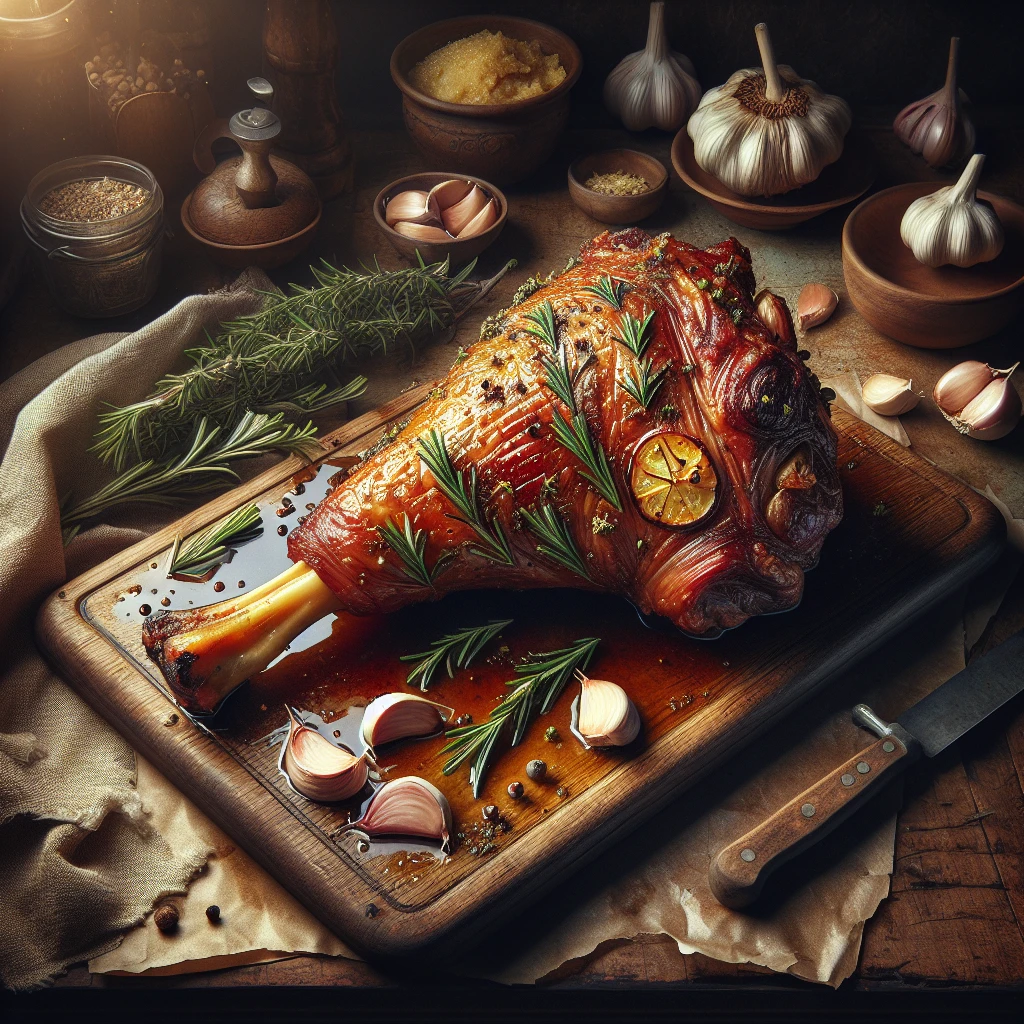
If you’re seeking a show-stopping centerpiece for your next family gathering, look no further than this Traditional Roast Leg of Lamb. This recipe is a timeless classic, perfect for holidays or any special occasion, bringing warmth and rich flavors to your table.
The star of the show is, of course, the leg of lamb. It’s a robust cut that becomes wonderfully tender when roasted. The garlic adds a deep, savory flavor, while the fresh rosemary imparts a woodsy, fragrant aroma. Olive oil helps to lock in moisture and flavor, with a hint of citrus from the lemon zest to brighten everything up. We use salt and black pepper to season and enhance the natural flavors. Lastly, the chicken broth and white wine create a flavorful base for the roasting juices, which can be used to make a delightful gravy.
This roast leg of lamb pairs beautifully with roasted vegetables like carrots and potatoes. A side of mint yogurt sauce complements the rich flavors wonderfully. For a lighter option, serve with a fresh green salad with a simple vinaigrette.
Start by preheating your oven to 375°F, ensuring it's hot and ready when you are. Take your lamb and, using a sharp knife, make small incisions all over. Insert slices of garlic and sprigs of rosemary into these slits. This technique not only infuses the meat with flavor but also makes your kitchen smell heavenly.
Next, rub the lamb generously with olive oil. This helps the seasoning stick and adds a beautiful golden crust during roasting. Sprinkle the lemon zest, salt, and black pepper evenly over the surface, making sure every bit is covered.
Place the lamb on a rack in a roasting pan. This allows air to circulate around the meat, ensuring even cooking. Pour the chicken broth and white wine into the pan. This mixture will keep the lamb moist and can later be used to make a gravy.
Roast the lamb for about 1.5 hours. You're looking for an internal temperature of 135°F for medium-rare—it's the sweet spot for a juicy and tender result. Once done, remove from the oven and cover with foil to rest for 15 minutes. This resting period is crucial as it allows the juices to redistribute, making your carving smooth and rewarding.